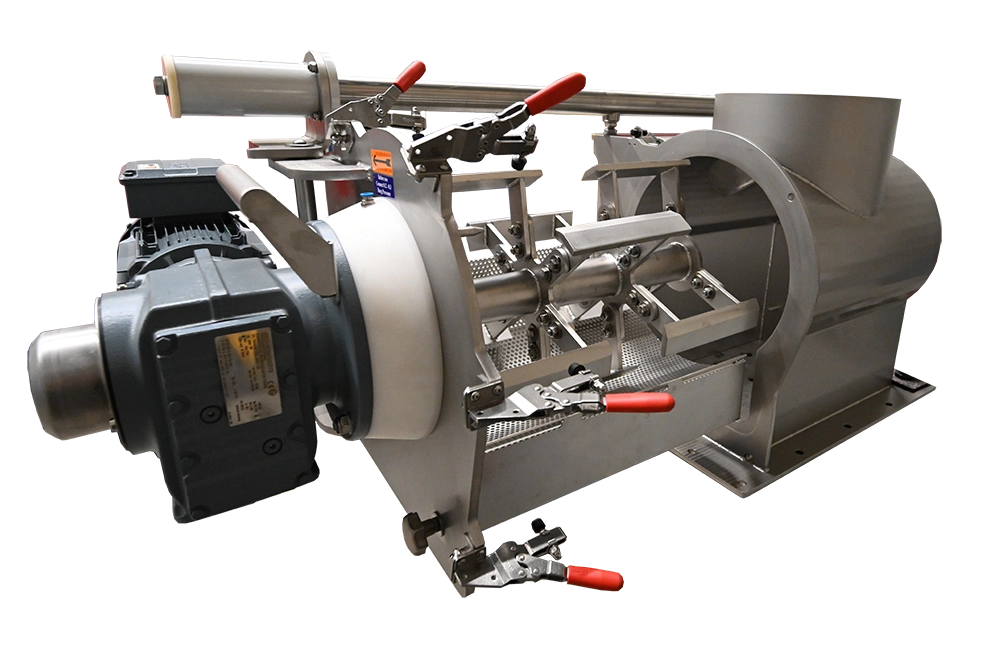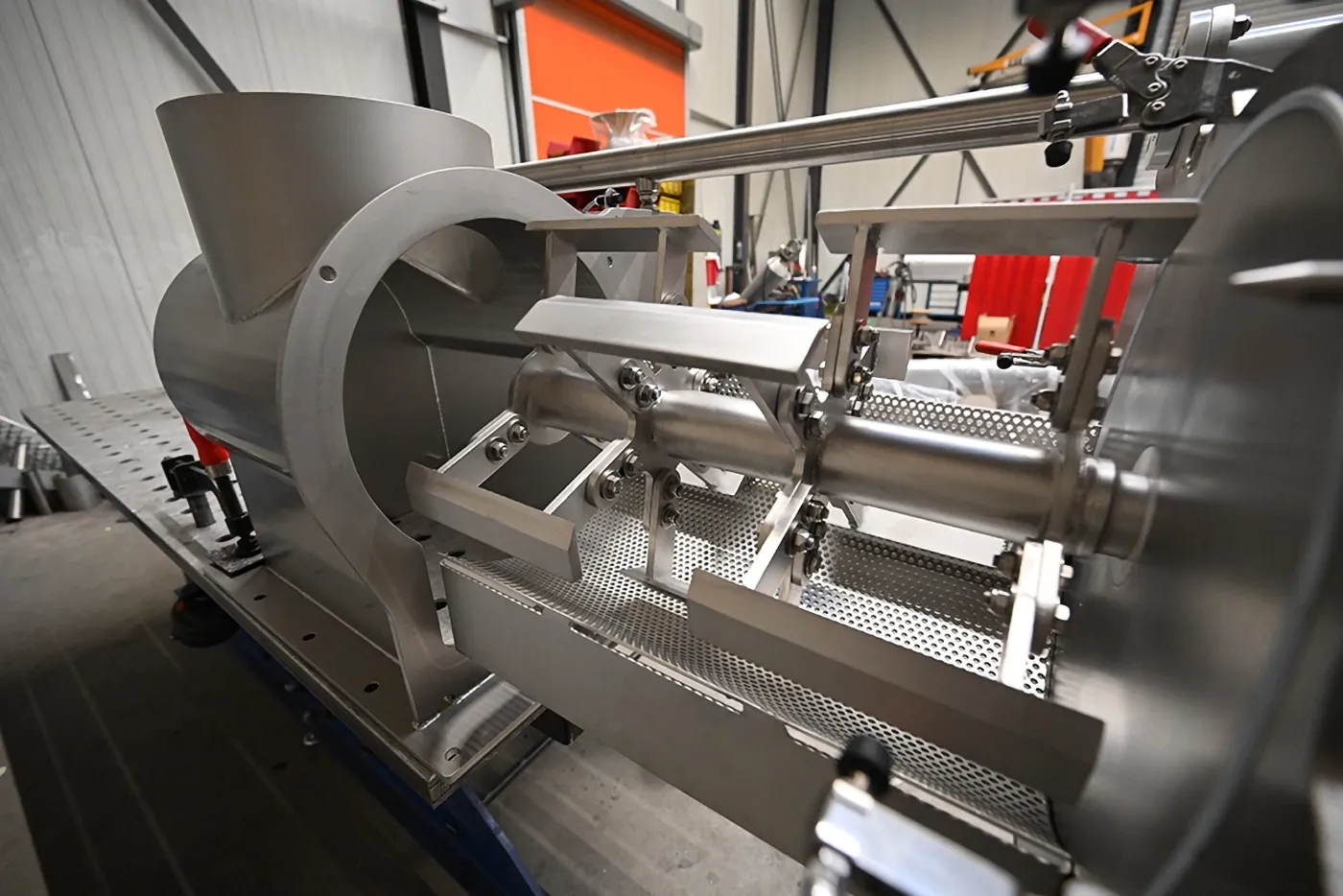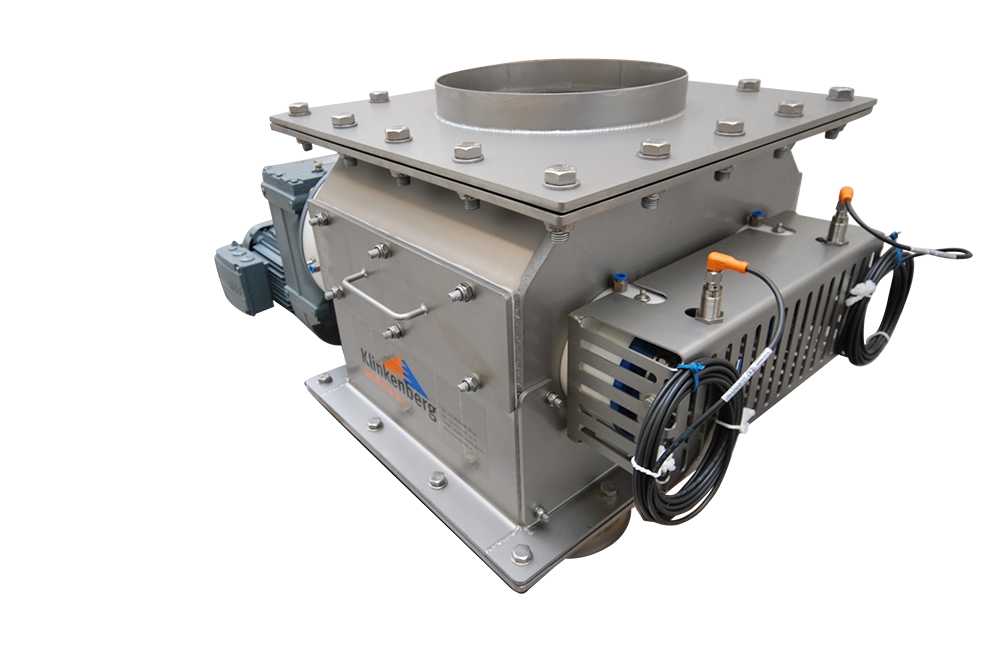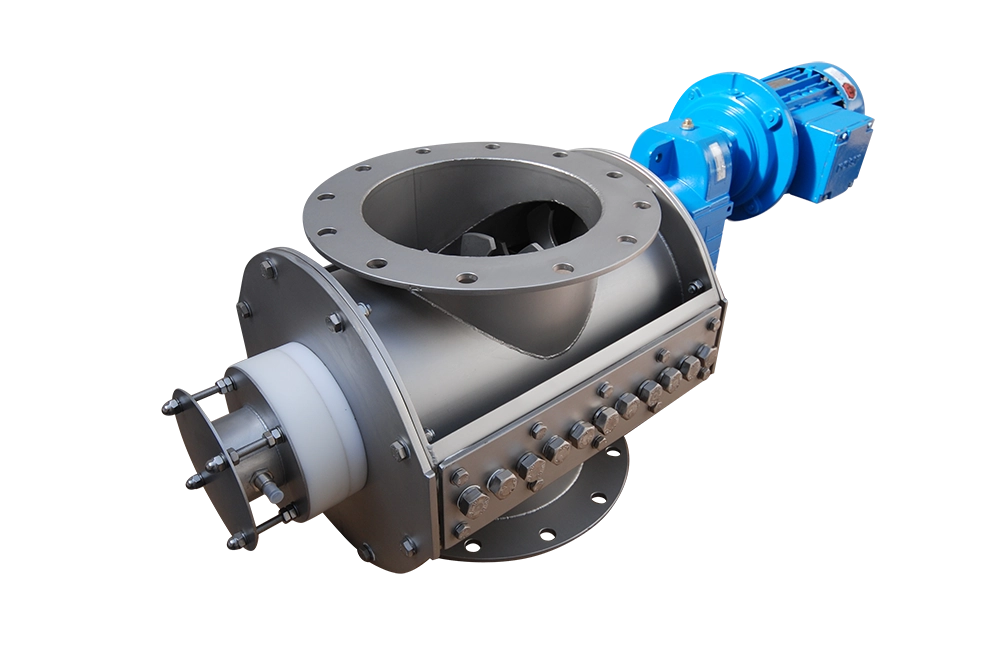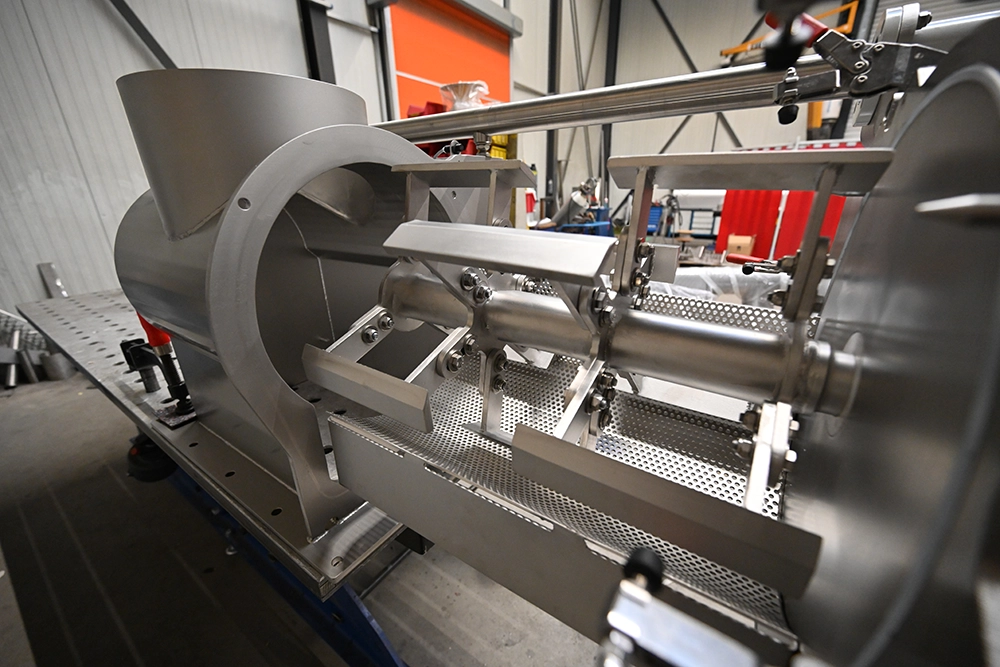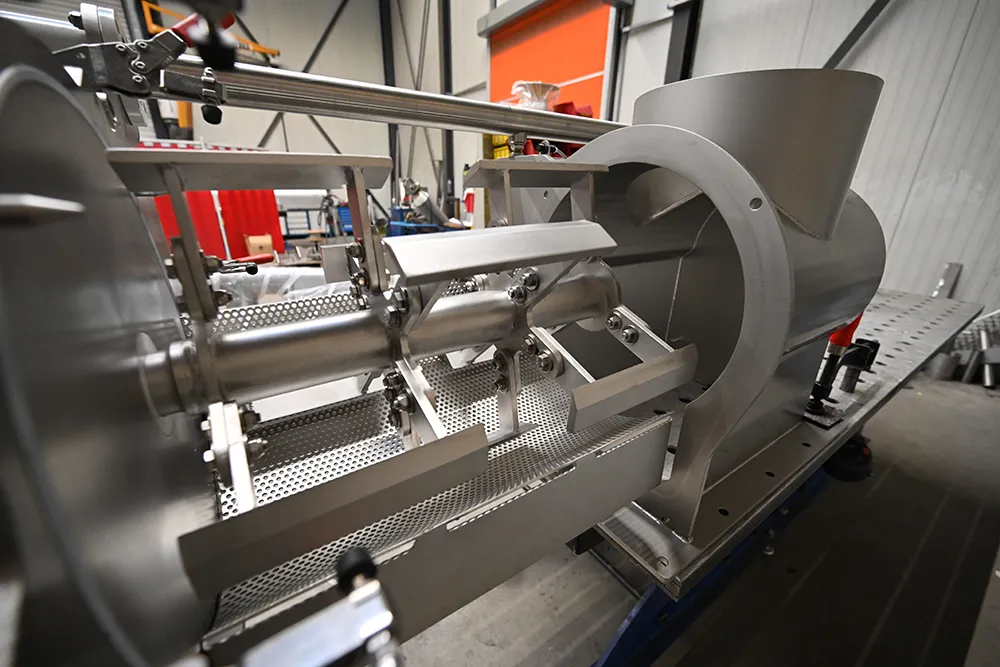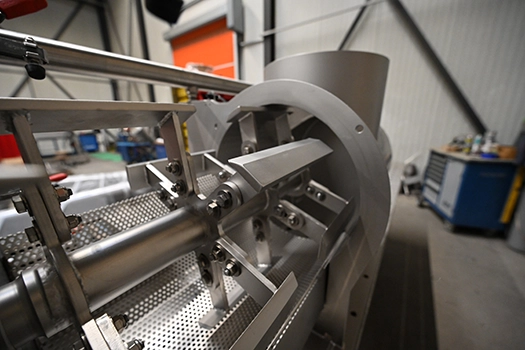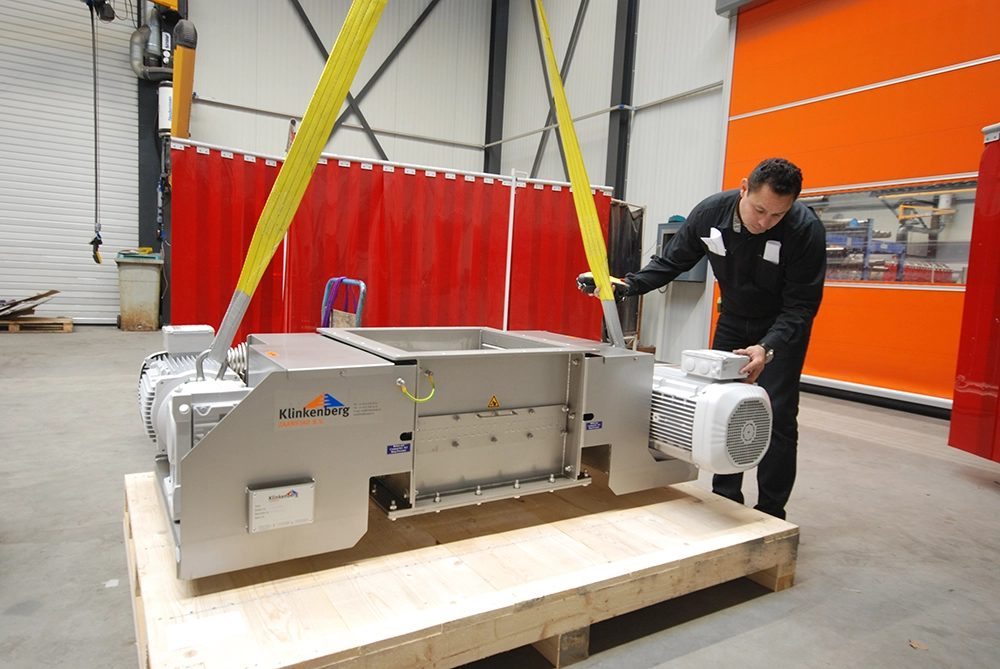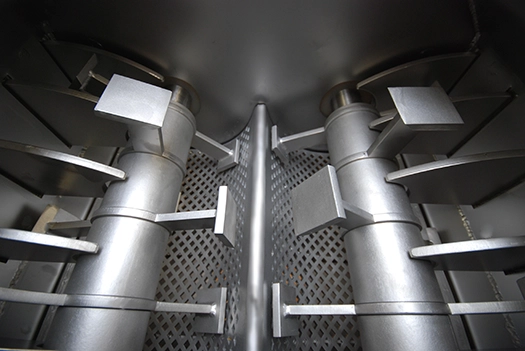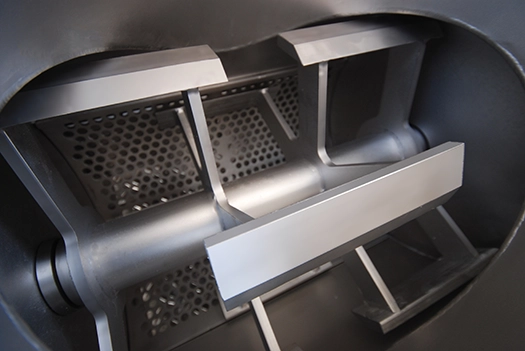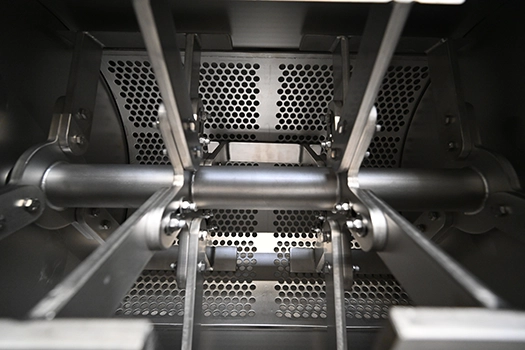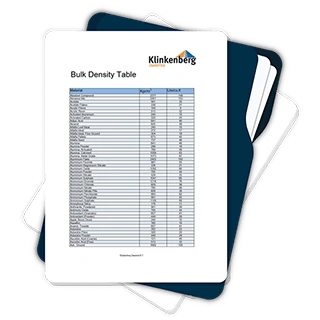Klinkenberg Lump BreakersHygienic, powerful, and easy to clean
Various industries work with materials that are prone to clumping. To reduce agglomerates, a lump breaker is an effective solution. These agglomerates can be reduced to approximately 3 to 4 mm, depending on the composition of the material. Here you’ll find all information about Klinkenberg’s lump breakers — robustly built crushers designed to process most types of agglomerates. To ensure you make the right purchase, we offer testing capabilities to determine the optimal configuration for your process.
Fast-cleaning breaker for the food, pharma, and chemical industries
Designing and manufacturing equipment for the food, chemical, and pharmaceutical industries requires an exceptionally meticulous approach. Infection, disease, and contamination risks for the end user must be prevented. That’s why machines must comply with strict hygienic regulations set by various controlling authorities.
In many cases, industrial lump breakers cannot be cleaned according to applicable hygiene standards — something increasingly unacceptable for manufacturers in food, pharma, and chemical sectors. Additionally, long cleaning times and production downtime are major concerns. Klinkenberg aims to develop a fast-cleaning breaker that meets all industry requirements and regulations. The breaker is designed to help customers clean more efficiently and effectively.

